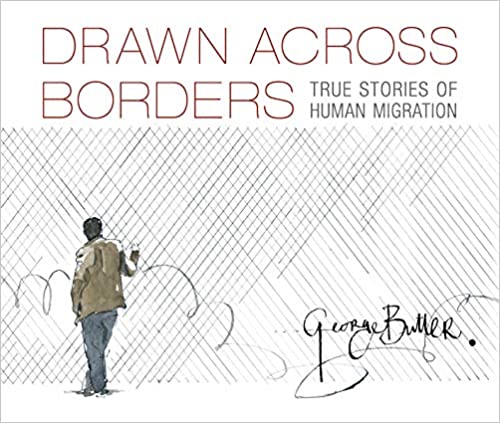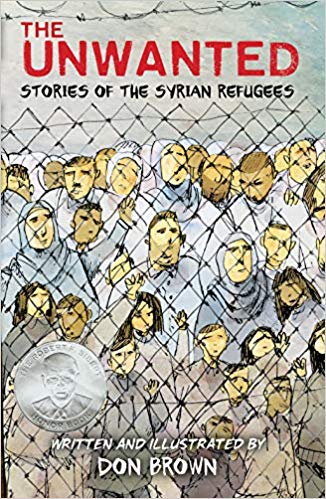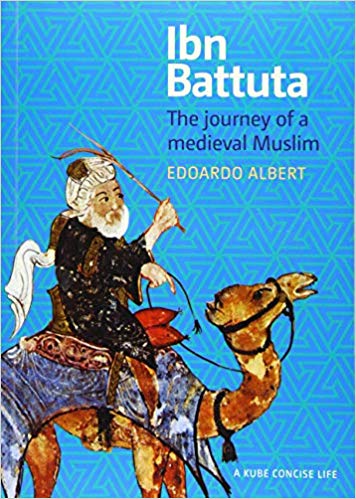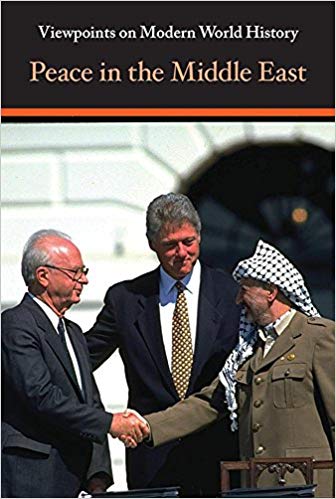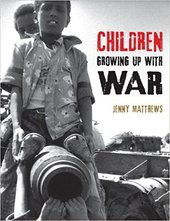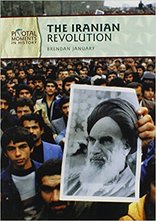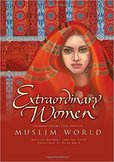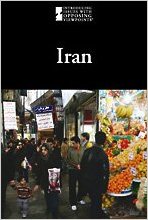2023 award winner
|
FROM HERE
by Luma Mufleh (Nancy Paulsen Books, 2023) With no word for “gay” in Arabic, Luma may not have known what to call the feelings she had growing up in Jordan during the 1980s, but she knew well enough to keep them secret. It was clear that not only would her family have trouble accepting her, but trapped in a conservative religious society, she could’ve also been killed if anyone discovered her sexuality. Luma spent her teenage years increasingly desperate to find a way out, and finally found one when she was accepted into college in the United States. Once there, Luma begins the agonizing process of applying for political asylum, which ensures her safety—but causes her family to break ties with her. Becoming a refugee in America is a rude awakening, and Luma must rely on the grace of friends and strangers alike as she builds a new life and finally embraces her full self. Slowly, she’s able to forge a new path forward with both her biological and chosen families, eventually founding Fugees Family, a nonprofit dedicated to the education and support of refugee children in the United States. A good story for high school students about the differences of a young person's life in two countries. The writing is engaging, and tells a unique story with a perspective that is relevant to today. Grades 7-9. |
2023 HONORABLE MENTION
|
FUGITIVE DREAMS: CHRONICLES OF OCCUPATION AND RESISTANCE
by Ramsey Hanhan (Fomite, 2022) Fugitive Dreams is a slightly fictionalized literary memoir illustrating a sweeping 50 years of life under occupation through personal stories. Born in Palestine ‘on the “wrong” side of the border,’ Sameer finds his way to America to rebuild his life. His immigrant experience in post-9/11 America is laced to the ongoing conflict at home with the common threads of school shootings, police violence, human rights abuses, activism, and walls. For the sake of his daughter, he decides he must do something. An Easy novelized style with personal accounts. Relatable, courageous in personal reflection, and interesting. High School and Adult. |
2022 award winner
|
A LAND WITH A PEOPLE: PALESTINIANS AND JEWS CONFRONT ZIONISM
edited by Esther Farmer, Rosalind Pollack Petchesky, Sarah Sills (Monthly Review Press, 2021) Stories touch hearts, open minds, and transform our understanding of the “other”―as well as our comprehension of our own roles and responsibilities― and A Land With a People emerges from this reckoning. It brings us the narratives of secular, Muslim, Christian, and queer Palestinians who endure the particular brand of settler colonialism known as Zionism. It relays the transformational journeys of Ashkenazi, Mizrahi, queer, and Palestinian Jews who have come to reject the received Zionist narrative. Unflinching in their confrontation of the power dynamics that underlie their transformation process, these writers find the courage to face what has happened to historic Palestine, and to their own families as a result. Contextualized by a detailed historical introduction and timeline charting 150 years of Palestinian and Jewish resistance to Zionism, this collection will stir emotions, provoke fresh thinking, and point to a more hopeful, loving future―one in which Palestine/Israel is seen for what it is in its entirety, as well as for what it can be. |
2021 award winner
|
DRAWN ACROSS BORDERS: TRUE STORIES OF HUMAN MIGRATION
by George Butler (Candlewick Studio, 2021) Follow award-winning artist George Butler, who made a series of pen-and-ink and watercolor portraits in war zones and refugee camps over the course of a decade. Butler features migrants and refugees in the Middle East, Europe, Africa, and Asia, and tells the humans tories behind the headlines, “sketching by the hospital bed of a ten-year-old Syrian boy who survived an airstrike, drawing the doll of a little Palestinian girl with big questions, or talking with a Masai herdsman forced to abandon his rural Kenyan home for the Kibera slums, George Butler turns reflective art and sensitive reportage into an eloquent cry for understanding and empathy.” These beautiful and inspiring stories help explain the complexity of why people all over the world are compelled to leave home. Ages 10-17/Grades 5-6 |
2021 HONORABLE MENTIONS
|
EXPLORE THE OLD CITY OF ALEPPO
by Khaldoun Fansa (Cune Press, 2020) The author, a former resident of Aleppo, now having to live abroad, is an architect who was involved in restoring Aleppo’s old city. This book offers the reader delightful images of beautiful architectural details of buildings, bazaars, homes and some inhabitants of Aleppo. This World Heritage site has been under threat since the hostilities began. The reader has a chance to learn about this beautiful city from a resident. Ages 11-14/4-6th Grade |
|
MARYAM'S MAGIC: THE STORY OF MATHEMETICIAN MARYAM MIRZAKHANI
By Megan Reid, Illustrated by Aaliya Jaleel (Balzer + Bray, 2021) This is the true story of Maryam Mirzakhani, an Iranian woman, whose love of stories helped her to see math differently. As a child, her love of stories propelled her toward the world of books. When at the age of 12 she was introduced to geometry, she saw math in a different way. Combining story and geometric shapes in ways that helped solve math’s most complicated problems, she was the first woman, and the first Iranian to win the Fields Medal mathematics award. Ages 4-8/K-4th Grade |
2019 award winner
|
THE UNWANTED: THE STORIES OF THE SYRIAN REFUGEES
by Don Brown (HMH Books for Young Readers, 2018) The ongoing Syrian crisis is in the news daily. Don Brown’s non-fiction story, in graphic novel style, brings to life the realities of war for the people of Syria. He begins with the teenage boys’ graffiti and chronologically reveals the events that led to war. But this story is also about hope, determination and the desire to struggle for a better future. The strength of this story is Don Brown’s focus on the people. The notes about his visits to refugee camps are a testament to the resilience of these displaced people. |
2019 honorable mention
|
IBN BATTUTA: THE JOURNEY OF A MEDIEVAL MUSLIM (A CONCISE LIFE SERIES)
by Edoardo Albert (Kube Publishing, 2019) Ibn Battuta was no ordinary traveller. Between 1325 CE when he set off and 1354 CE when he finally returned home to stay, he had visited about 40 modern countries and travelled roughly 75,000 miles, going on foot, camel, horse, wagon, boat and even sled. His travels took him to nearly every part of the Muslim world at the time, from Morocco to Mecca, through Persia and Iraq, down the west coast of Africa, into Russia, over to India and even across to China. Ibn Battuta's journey gives us a fascinating window into what the world was like in the fourteenth century. With illustrations, photographs, and maps, the rich and diverse world that produced Ibn Battuta is vividly brought alive. Especially helpful are the timeline, glossary and the section with further reading suggestions. |
2018 award winner
|
PEACE IN THE MIDDLE EAST (VIEWPOINTS ON MODERN WORLD HISTORY)
by Martin Gitlin (Greenhaven Publishing, 2018) This book, a collection of 23 short essays representing a variety of viewpoints about contemporary Middle Eastern issues, is very useful to high school educators working with students on critical thinking and the ability to analyze a variety of perspectives. Teachers need to be sure that students understand that the articles in the book are opinion essays and that they do not represent all perspectives on a given issue. Nonetheless, the presentation of a variety of views on different Middle Eastern issues is an invaluable resource. |
2018 honorable mentions
|
AFGHANISTAN (ENCHANTMENT OF THE WORLD, SECOND SERIES)
by Ruth Bjorklund (Scholastic, 2018) This introduction to Afghanistan contains colorful photos and well-organized, well-written content updated to reflect the most recent events and changes in the country. Further, the book stands out from other youth books about the Middle East because of its balance and avoidance of stereotypes. For example, women/girls are shown in a variety of roles – political, educational, athletic – and the book includes stories of children’s lives that highlight the commonalities, as well as differences, with the lives of children in the U.S. The book should be a useful resource for both teachers and students. |
|
YOUNG PALESTINIANS SPEAK: LIVING UNDER OCCUPATION
by Anthony Robinson and Annemarie Young (Interlink Books, 2017) A collection of interviews with Palestinian children/youth, this book will help U.S. young people hear the stories of their counterparts in the West Bank and Gaza. Reviewers particularly liked that the interviewed children were from many different parts of the Palestinian territories. One caveat: Teachers will need to provide context in order to use the book, and the book’s introductory section is not adequate to provide that context. Nonetheless, the book is valuable in that it provides a variety of voices and insights that U.S. young people rarely have the opportunity to encounter. |
2017 Award Winners
|
A REFUGEE’S JOURNEY FROM SYRIA and A REFUGEE’S JOURNEY FROM AFGHANISTAN
by Helen Mason (Leaving My Homeland series; Crabtree Publishing, 2017). Part of the Leaving My Homeland series, these books stood out for their clear writing, vivid pictures, and broad usefulness to K-12 teachers. Although the books are intended for elementary readers, middle school educators felt the books have sophisticated enough content to engage middle school and even struggling high school readers. Difficult words are defined, the historical content is interspersed with the story of one refugee family, and there is a service learning component at the end. Overall, the books are well-written, informative, interesting, and useful. |
2017 Honorable Mentions
|
A REFUGEE’S JOURNEY FROM IRAQ
by Ellen Rodger (Leaving My Homeland Series; Crabtree Publishing, 2017). Also part of the Leaving My Homeland series and following the same structure, this book was vivid, interesting, and very useful for elementary and possibly middle school teachers. |
|
ROADMAP TO SUCCESS: INSPIRING JOURNEYS OF TEN ICONIC COPTIC LEADERS
by Shahira Abdel Shahid (Archway Publishing, 2016). This book provides positive role models of inspiring leaders from non-traditional Middle Eastern backgrounds. Since each of the ten leaders are interviewed separately, the book can be easily excerpted (students assigned one chapter to read) for a variety of classes: Middle East Studies, Leadership, Religious Studies (due to the book’s Christian content), or even English classes. |
2016 Award Winners
|
GOLDA MEIR: A STRONG, DETERMINED LEADER
by David A. Adler (Puffin). Golda Meir, a biography for upper elementary/middle school students, focuses on Meir’s childhood and young adulthood. The way in which the book charts the trajectory of a person who became important later is meaningful to young readers who can identify with her journey and aspire to future greatness. The book is also well-written with detailed pencil drawings that make it more appealing to youth. |
|
THE ANCIENT EGYPTIANS (DISCOVER)
by Isabel and Imogen Greenberg (Frances Lincoln Children’s Books). The Ancient Egyptians (Discover) will please middle school students (and their teachers) during the required study of ancient civilizations. The book is beautifully, colorfully illustrated in a graphic novel format with a pull-out map and timeline. It is written in a fun, lively tone that will engage intermediate-level readers. |
2015 Award Winner
|
CHILDREN GROWING UP WITH WAR
by Jenny Matthews (Candlewick Press, 2014). Children Growing Up with War addresses issues and situations of children affected by war in the Middle East region and elsewhere. Matthews, a photojournalist, describes her experiences and reactions to what she has observed of children in conflict areas and addresses the issue of privilege. She presents this timely topic in a respectful way that balances the horrors of war with hope, agency, and a discussion of the Rights of the Child. The book could be used in high school journalism, social studies, and photography classes although the writing style and photographs also make it accessible to younger students if guided by an adult who could help in discussing the difficult issues. |
2015 Honorable Mentions
|
CHILDREN OF THE STONE: THE POWER OF MUSIC IN A HARD LAND
by Sandy Tolan (Bloomsbury Publishing, 2015). Children of the Stone is the story of Ramzi Aburedwan. Growing up in a Palestinian refugee camp in the West Bank, Ramzi was the subject of an iconic photograph of a boy throwing a stone at Israeli troops during the intifada. As a teenager, he discovered the power of music, studied at a music conservatory in France, and years later, went on to found a music program to inspire Palestinian young people. The book is well-researched by author Tolan as well as poignant in presenting a story of personal inspiration and commitment. Its focus on music and the experiences of children and youth makes it a story that to which Western young people will relate and find compelling. |
|
OPPOSING VIEWPOINTS: EGYPT
edited by Margaret Haerens (Greenhaven Press, 2015). Part of the Opposing Viewpoints series, this timely book focuses on Egypt’s transformation after the Arab Spring. Short excerpts by prominent Arab and Western Middle East specialists are grouped into sections based on big issues, for example: “What is the Impact of Recent Political and Social Upheaval in Egypt?” and “What Should U.S. Foreign Policy Be?”. Provided in addition to an individual viewpoint are the author’s credentials, a statement of his/her thesis, and questions to consider while reading. The book encourages critical thinking by high school students as it guides them to a nuanced understanding of complex, contemporary issues. |
2013 Award Winners
|
THE COMPASSIONATE WARRIOR: ABD EL-KADER OF ALGERIA
by Elsa Marston (Wisdom Tales, 2013). A well-written account of a 19th century Algerian freedom fighter, Abd el-Kader, who won respect in the West for his humanitarian values and compassionate policies during the struggle against French colonialism. In fact, Abd el-Kader is commended by Abraham Lincoln, has a town in Iowa named after him, and is the subject of a yearly essay competition for U.S. high school students. Reviewers felt that this book would be an excellent addition to any high school classroom or library because of its clear, interesting writing style and relevance to World History, U.S. History, and Constitution classes. |
|
THE ARAB WORLD THOUGHT OF IT: INVENTIONS, INNOVATIONS, AND AMAZING FACTS
by Saima Hussain (Annick Press, 2013). A wonderful, compelling book with “sufficient text to explain the beautiful photography.” Middle school and high school students will love learning about developments in the medieval Islamic world that affect our lives today. They will be intrigued by stories – and photos – showing how soap was invented, how the scalpel was developed for use in surgery, how wind was first harnessed for power, and many others. Teachers will love the accompanying map, timeline, and index, which make the book useful and informative as well as fun. |
2012 Award Winners
|
BEYOND BULLETS: A PHOTO JOURNAL OF AFGHANISTAN
by Rafal Gerszak (Annick Press, 2012). Beyond Bullets documents photo-journalist Rafal Gerszak’s experiences during the year that he spent embedded with American forces in Afghanistan. However, it is much more than a war story. There are textures and layers to the book as the author struggles to get beneath the surface and reach a deeper understanding of life in Afghanistan. Reviewers commented that the book “shows the power of photojournalism and gave a unique perspective” and that it is especially powerful for high school students whose parents served in Afghanistan but have not yet unwrapped the experience. Overall, the book is an insightful, highly personal reflection. |
|
BYE BYE BABYLON: BEIRUT 1975-1979
by Lamia Ziade (Interlink Publishing Group, 2012). Bye Bye Babylon is a graphic novel/memoir of the author’s experiences as a child (age 7-11) in war-torn Lebanon. Reviewers described the book as “fun and colorful” but also appreciated how it “took the graphic novel approach a little further by adding historical context to the memoir.” They concluded that young people will love it – and will also learn more about the transformation of everyday life in Beirut during the 1970s conflict. |
2012 Honorable Mention
|
LIVING THROUGH THE ARAB-ISRAELI WAR SINCE 1948
by Alex Woolf (Heinemann-Raintree, 2012). Commended as an excellent resource on the Arab Israeli conflict because of its “honest attempt to present both sides while not offending any moderates.” It is also very readable, making a complex subject accessible to a high school audience. |
2011 Award Winners
|
THE GENIUS OF ISLAM: HOW MUSLIMS MADE THE MODERN WORLD
by Bryn Barnard (Alfred A. Knopf Books for Young Readers, 2011). The Genius of Islam is an excellent introduction to the inventions and innovations of the medieval Muslim world. Rather than attempting a general overview of the subject, author Bryn Barnard highlights a few representative topics – for example, optical science, the development of paper, and calligraphy. Reviewers noted that late elementary, middle school, and even older readers will love the book’s wonderful illustrations and organization into short, manageable topics. |
|
HOW TO UNDERSTAND ISRAEL IN 60 DAYS OR LESS
by Sarah Glidden (Vertigo, 2011). How to Understand Israel in 60 Days or Less is a graphic “novel”/true account. The author, a Jewish-American, describes her heritage trip to Israel and her attempts to come to grips with the complex social and political situation in that country. High school readers will appreciate the colorful illustrations and the travel story; more discerning readers will also respect the thoughtful, balanced look at modern Israel. |
2010 Award Winner
|
A BRIEF HISTORY OF SAUDI ARABIA
by James Wynbrandt (Checkmark Books, 2010). In recent years, Saudi Arabia has experienced changes that have both altered the internal structure of the country and affected its foreign relations, and many works continue to propagate stereotypes about what the Kingdom was, while paying little attention to recent developments. This title is written in a clear, concise style that is approachable to the younger reader (but informative enough for older readers as well), and manages to steer an even course through a subject that is often treated with skepticism or defensiveness. |
2010 Honorable Mention
|
ENCYCLOPEDIA OF MUSLIM-AMERICAN HISTORY
by Edward E. Curtis IV, editor (Facts on File, 2010). This illustrated two-volume encyclopedia includes some 300 articles covering historical and contemporary issues, events, people, court cases, themes, and activism relating to Muslim-American history. The reference also includes 50 original documents, a master chronology and an extensive bibliography. Given how little has been published on the topic, especially for a younger audience, this book is a welcome addition to the field. |
2009 Award Winner
|
THE IRANIAN REVOLUTION
by Brendan January (Twenty-First Century Books, 2008). Part of the Pivotal Moments That Changed the World series, this entry focusing on the Iranian revolution of 1979 won much praise from the Book Award Committee for its thoroughness, clear writing, and the use of supplemental primary sources. Instead of succumbing to the “clash of civilizations” argument, author Brendan January instead delves into the deeper causes of the Iranian revolution, and brings the story forward to describe how the forces that triggered the revolution continue to play out in the troubled relationship between the United States and Iran today. An excellent addition to any middle- or high school library, this book is a welcome entry to the corpus of research literature for younger people. |
2009 Honorable Mentions
|
THE ILLUSTRATED ENCYCLOPAEDIA OF ARABIA
by Mary Beardwood (Stacey International Publishing, 2009). This detailed encyclopedia entry focuses on the geography, cultures, and, especially, the flora and fauna of the Arabian Peninsula. With many photographs, charts, maps, figures, asides, this exhaustive and beautifully illustrated text will answer every question you never knew that you had about Arabia on subjects from pearling to fossils, migratory birds to the many uses of the date palm. The sheer breadth of information will eliminate the narrow geographic and social stereotypes so many students have about the Middle East. |
|
THE MIDDLE EAST TODAY; POLITICAL, GEOGRAPHICAL & CULTURAL PERSPECTIVES
by Dona J. Stewart (Routledge, 2008). This textbook provides a clearly written, concise introduction to the modern Middle East. Short, easy-to-digest pieces are augmented by textboxes and maps, exploring all aspects of the region from politics and government, to history, geography, and various cultural perspectives. While perhaps too advanced for some high school students, this book would find a home in Advanced Placement or International Baccalaureate classes or libraries meant to support them, and is also suitable for many university level survey courses on the Middle East. |
2008 Award Winner
|
EXTRAORDINARY WOMEN FROM THE MUSLIM WORLD
by Natalie Maydell and Sep Riahi, illustrated by Heba Amin (Global Content Ventures, 2007). This encyclopedic book provides short pieces on a wide variety of notable women from throughout Islamic history. From wives of Muhammad to an African poetess to a Turkish fighter pilot to an Indonesian freedom fighter to an Egyptian singer, this book dispels nearly every stereotype about Muslim women, and introduces many famous female role models to a younger audience for the first time. |
2007 Award Winners
|
IRAQ (MODERN WORLD NATION SERIES)
by Dale Lightfoot, Charles F. Gritzner, series editor (Chelsea House Publishers, 2007). Part of the Modern Nations Series by Chelsea House Publishers, this entry on Iraq is clearly written, well organized, and nicely illustrated (great photos and maps). Written by a former contractor who worked with Iraqi universities to rebuild the country’s educational program, this book gives a thorough overview of Iraq’s culture, geography, and history, but also touches on popular culture, sports, and youth culture. These flourishes that could only be written by someone who has been there give the text greater authenticity and place it in a category over many of the other resources rushed to print after the 2003 U.S. invasion. This entry in the series is a worthy standout. |
|
OPPOSING VIEWPOINTS: IRAN (OPPOSING VIEWPOINTS SERIES)
Laura K. Egendorf, editor (Greenhaven Press, 2006). Part of the critically acclaimed Opposing Viewpoints Series, this volume dealing with Iran continues the series’ tradition of using short primary documents to encourage readers to familiarize themselves with opposing answers to a posed question: Is Iran a Threat to Global Security? What is the Future of Iran? The strength of the opposing viewpoints series is that it encourages its readers to understand both sides of an argument, rather than creating an arbitrary middle ground or attempting to pass off one set of views as “right” and the opposing side as “wrong.” An excellent resource for secondary level educators that can also be easily appreciated by the lay reader looking for more information on this timely subject. |
2006 Award Winners
|
THE ILLUSTRATOR’S NOTEBOOK
by Mohieddin Ellabbad (Groundwood Books, 2006). The famous Egyptian illustrator Mohieddin Ellabbad presents his “notebook” which shares how he grew up and took on his profession. He uses text, photographs, drawings, and Arabic script to communicate his aspirations as an artist. Most compelling are the questions he raises for readers, for example, “Where do stories come from?” and “How does the way you feel affect the way you draw?” Younger readers will be delighted by how he combines images and shows the change in his country over time. In this wonderfully creative and unique book, Ellabbad offers Egyptian history, breaks stereotypes, shares his personal story, and inspires readers to reflect upon their own experiences. |
2006 Honorable Mentions
|
GREAT MUSLIM PHILOSOPHERS AND SCIENTISTS IN THE MIDDLE AGES series (Rosen Publishing Group, 2006). Includes: Albucasis (Abu al-Qasim Al-Zahrawi): Renowned Muslim Surgeon of the Tenth Century by Fred Ramen; Averroes (Ibn Rushd): Muslim Scholar, Philosopher, and Physician of the Twelfth Century by Liz Sonneborn; Avicenna (Ibn Sina): Muslim Physician and Philosopher of the Eleventh Century by Aisha Khan; Al-Biruni: Master Astronomer and Muslim Scholar of the Eleventh Century by Bill Scheppler; Al-Khwarizmi: The Inventor of Algebra by Corona Brezina; and Al-Kindi: The Father of Arab Philosophy by Tony Abboud.
The many contributions of Muslim scholars to science, philosophy, and development of knowledge across numerous disciplines are presented in this powerful series. These richly illustrated books provide excellent reference sources and interesting biographical reading for intermediate level students and above. Although each book focuses on a particular individual, linkages are made among the featured scientists and philosophers as with others in different eras and regions. Availability of such a series is highly significant at a time when U.S. schools are seeking resources that assist in teaching about non-Western history, religions, and cultural groups. |
|
LEBANON A to Z: A MIDDLE EASTERN MOSAIC
by Marijean Boueri, Jill Boutros, and Joanne Sayad, illustrated by Tatiana Sabbagh (Publishing Works, 2005). Kareem, an eleven year-old Lebanese boy, and his friends of different ethnic and religious backgrounds, proudly introduce readers to many aspects of their country. Organized by the letters of the English alphabet, topics such as Diversity, Gibran, Olives, Phoenicians, and War are only some of the themes presented. The languages of Lebanon figure prominently as Arabic and French words are interspersed throughout the text. Younger readers will learn much from the detailed and colorful illustrations by Tatiana Sabbagh that feature images of Lebanese history, culture, and daily life. |
2005 Award Winner
|
HISTORICAL ATLAS OF ISLAM
by Malise Ruthven and Azim Nanji (Harvard University Press, 2004). This beautifully illustrated history of Islam provides a broad overview of the economic, social, political, and cultural history of the Islamic world from the birth of the Prophet Muhammad to the present. Brief essays address pivotal moments and movements and eras, and color maps and photographs effectively complement the text throughout. Clear and concise, TheHistorical Atlas of Islam serves as an excellent introduction to Islamic civilization. |
2004 Award Winner
|
MOSQUE
by David Macaulay (Houghton Mifflin Company, 2003). Macauley’s masterful work provides step-by-step details and diagrams of the construction of a fictional sixteenth century Ottoman mosque. As the author walks the reader through the engineering and artistry of the structure, he reveals the mosque’s diverse functions in the community. |
|
TEEN LIFE IN THE MIDDLE EAST
by Ali Akbar Mahdi, editor (Greenwood Press, 2003). This compilation offers insights into the interests, family and social lives, religious practices, and culture of teens in twelve profiled countries. |
2004 Honorable Mentions
|
WITNESS TO HISTORY: AFGHANISTAN
by David Downing (Heinemann Library, 2004). Clarifies the many perspectives and experiences in a conflict that while much in the news, remains little understood among Americans. |
|
A HISTORY OF THE MUSLIM WORLD TO 1405: THE MAKING OF A CIVILIZATION
by Vernon O. Egger (Prentice Hall, 2003). "...accorded honorable mention for its clear style in presenting sophisticated themes, avoidance of clichés common in introductory works, and accessibility to the high school audience." |
2003 Award Winner
|
WOMEN IN THE MIDDLE EAST: TRADITION AND CHANGE
by Ramsay Harik and Elsa Marston (revised edition, Franklin Watts, 2003). This comprehensive look at Middle Eastern women and their struggle to incorporate both tradition and change in their daily lives is a major contribution to resources on this topic of wide interest. Of particular note, the revised edition includes two chapters that cover the experience of women in Afghanistan and women’s health issues region-wide. |
2001 Award Winner
|
ISLAM
by Sue Penney (World Beliefs and Cultures series, Heinemann Library, 2000). Written for the upper elementary level, this reference clearly and accurately describes Islam’s origins, the development of Islamic civilization, and the religion’s basic beliefs and practices. Sections on family life and celebrations help convey the role of Islam in the everyday lives of real people. |




